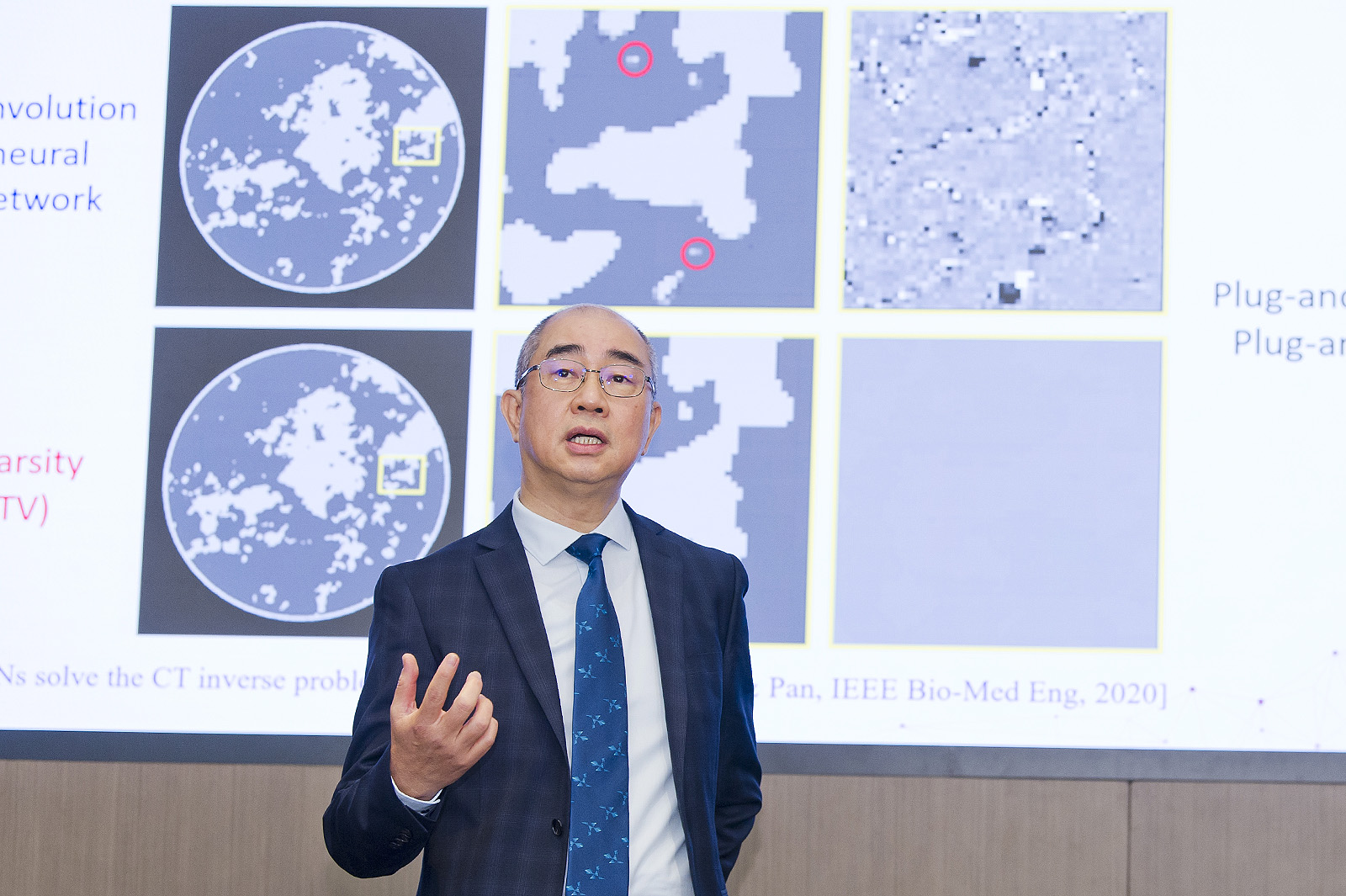Sparsity: The beauty of less is more

Sparsity is a way to exploit the low-dimensional structure of solutions to obtain feasible solutions for high-dimensional problems, according to Professor Raymond Chan Hon-fu, Vice-President (Student Affairs) and Chair Professor in the Department of Mathematics at City University of Hong Kong.
Professor Chan, an expert in imaging processing, was speaking at the President’s Lecture Series: Excellence in Academia held online and in person on 16 April. The talk was titled “Sparsity – the beauty of less is more”.
In his address, Professor Chan introduced “regularisation methods that enforce sparsity in solutions and their application to several image reconstruction problems”.
The essential aim of such work is to improve image quality across a range of subjects by making them less blurry using computational mathematics, in particular to numerical linear algebra and applications to imaging sciences.
The applications of his image processing research is highly relatable. Areas include rendering pictures taken on mobile phones less “noisy”, improving the clarity of high-resolution video, enabling ground-based telescopes to overcome atmospheric blurring, and locating the position of space debris orbiting the Earth.
In fact, Professor Chan is currently collaborating with a European team on developing algorithms for the European Southern Observatory and the world's largest telescope, the Extremely Large Telescope, in Chile. His work will help to produce sharper images of satellites, stars and outer space once the telescope becomes operational in 2025.
The mathematical concept behind de-noising, Professor Chan said, is sparsity, e.g. compressing image data to produce a matrix containing a large proportion of zeroes. The basic of this approach is Haar’s wavelet transformation from over 100 years ago but used today extensively as the basis for image denoising, restoration and so forth.
“One of the key points in understanding image processing concerns pixels,” he said.
Typically for grey-scale images, 255 is the numerical value for 100% white and 0 for 100% black, with values in between representing shades of grey, while colour images based on red, green and blue components are represented as a vector of three numbers on a colour plane.
The application of math can thus “denoise” an image and even provide 3D depth, making it possible to locate debris in space more accurately and provide more information of depth when seeing the world through microscopes.
“There are many other data-related applications that can be solved via sparsity, getting more from less,” Professor Chan concluded.
Professor Chan was elected to the prestigious American Mathematical Society for his contributions to computational mathematics, numerical linear algebra and imaging sciences. He is a Fellow of the Society for Industrial and Applied Mathematics (SIAM) in the US.